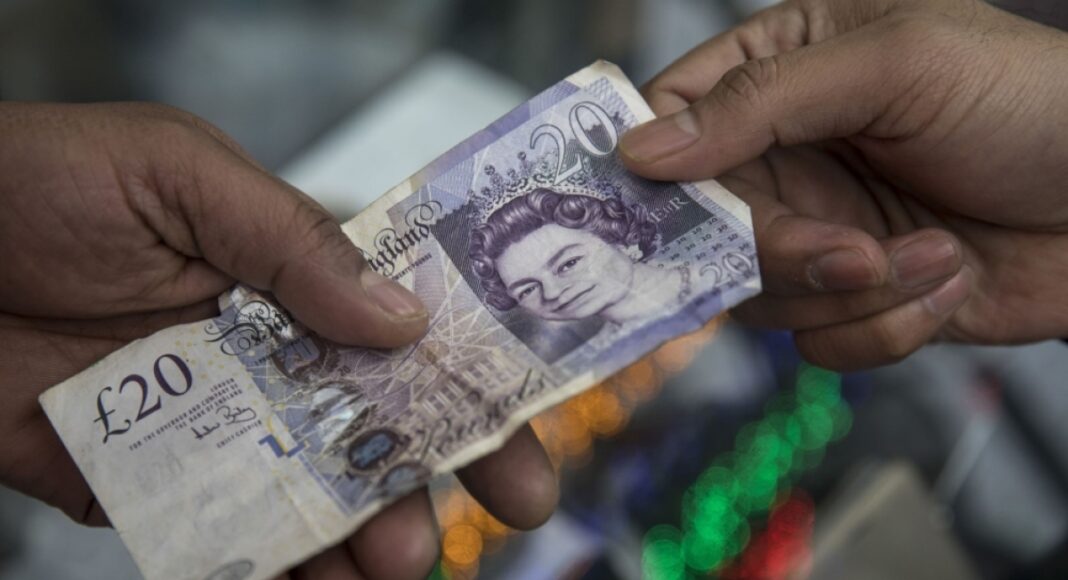Queen Elizabeth II has been depicted on British banknotes and coins for decades. Her portrait also has been featured on currencies in dozens of other places around the world as a reminder of the British empire’s colonial reach.
So what happens next after her death this week? It will take time for the United Kingdom, Canada, Australia, New Zealand and other countries to swap out the monarchs on their money.
But that does not mean the bills do not work — they do.
Here is a look at what is next for money featuring the late queen:
Switching monarchs
The queen’s portrait on British notes and coins is expected to be replaced by a likeness of King Charles III, but it will not be immediate.
“Current banknotes featuring the image of Her Majesty The Queen will continue to be legal tender,” the Bank of England said.
An announcement on existing paper money issued by the UK’s central bank will be made after the official 10-day mourning period has ended, it said.
With 4.7 billion UK banknotes worth 82 billion pounds ($95bn) in circulation and about 29 billion coins, British money bearing the queen’s image will likely be in circulation for years.
“Rather than all of the current coins and notes being handed in, the process will be a gradual one and many of the coins featuring portraits of Queen Elizabeth II will remain in circulation for many years to come,” according to Coin Expert, a British coin research website.
After Charles takes the crown at his coronation, a new portrait will need to be taken to use on redesigned notes and coins, the website said.
Coins featuring him will show him facing to the left, replacing the queen’s rightward gaze in line with a tradition dating to the 17th century. It dictates monarchs be shown in profile and in opposite direction to their predecessors.
Wads of British pound sterling banknotes are stacked in piles [File: Leonhard Foeger/Reuters]
What about other countries?
Other nations’ currencies that feature the queen — from Australian, Canadian and Belizean dollars — will also be updated with the new monarch, but the process could take longer, because “it is much easier to enforce a new design in the country where it originates, rather than in other countries where different jurisdiction may take place”, Coin Expert said.
The Bank of Canada said its current 20 dollars banknote, made of synthetic polymer, is designed “to circulate for years to come”.
“There is no legislative requirement to change the design within a prescribed period when the Monarch changes,” the Bank of Canada said.
In general, when a new portrait subject is chosen for Canadian money, the process begins with drawing up a fresh design, and a new note is ready to be issued “a few years later”, the bank said.
The Reserve Bank of New Zealand said it will issue all of its stock of coins depicting the queen before new ones go out with Charles’s image. The queen is also featured on the 20 dollars bill, which is made “infrequently” and there is no “plan to destroy stock or shorten the life of existing banknotes just because they show the Queen”, the bank said.
“It will be several years before we need to introduce coins featuring King Charles the Third, and longer until stocks of $20 notes are exhausted,” it added.
A British 10 pounds banknote is seen in an illustration [File: Phil Noble/Reuters]
The queen’s currency
She first appeared on money when she was still a princess. That was in 1935, when Canada’s 20 dollars bill featured eight-year-old Princess Elizabeth, whose grandfather King George V was then the monarch, as part of a new series of notes.
Canadian 20-dollar bills were updated with a new portrait of the queen in 1954, a year after her coronation, and her portrait also started appearing on other currencies around the world, mainly in British colonies and Commonwealth countries.
British bills did not get her image until 1960 — seven years after her coronation. That is when the Bank of England was granted permission to use her likeness on paper money, starting with the 1 pound note, though the formal and regal image was criticised for being too severe and unrealistic.
She became the first monarch to be depicted on British banknotes. British coins, meanwhile, have featured kings and queens for more than 1,000 years.
Queen Elizabeth prepares to deliver a speech at Buckingham Palace in 2018 [File: Jonathan Brady/Reuters]
Currencies outside the UK
At one time, Queen Elizabeth II appeared on at least 33 different currencies, more than any other monarch, an achievement noted by Guinness World Records.
Her image is still featured on money in places where she remains a beloved figure, such as Canada, and continues to incorporate the Union Jack into their flags, like Australia and New Zealand.
She is also found on notes and coins issued by the Eastern Caribbean Central Bank, the monetary authority for a group of small nations, including Antigua and Barbuda, Dominica, Grenada, Montserrat, St Kitts and Nevis, St Lucia, and St Vincent and the Grenadines.
Other places have long stopped putting her face on their currency. After Jamaica gained independence from Britain in 1962, its central bank replaced the queen on paper notes with portraits of national heroes such as Marcus Garvey.
Notes in Seychelles now feature local wildlife instead of the queen. Bermuda did a similar revamp, though the queen retains a minor position on bills. Trinidad and Tobago swapped a coat of arms after it became a republic.
Hong Kong dollars issued after Britain handed its colony back to Beijing in 1997 feature Chinese dragons and skyscrapers on the Asian financial centre’s skyline.



